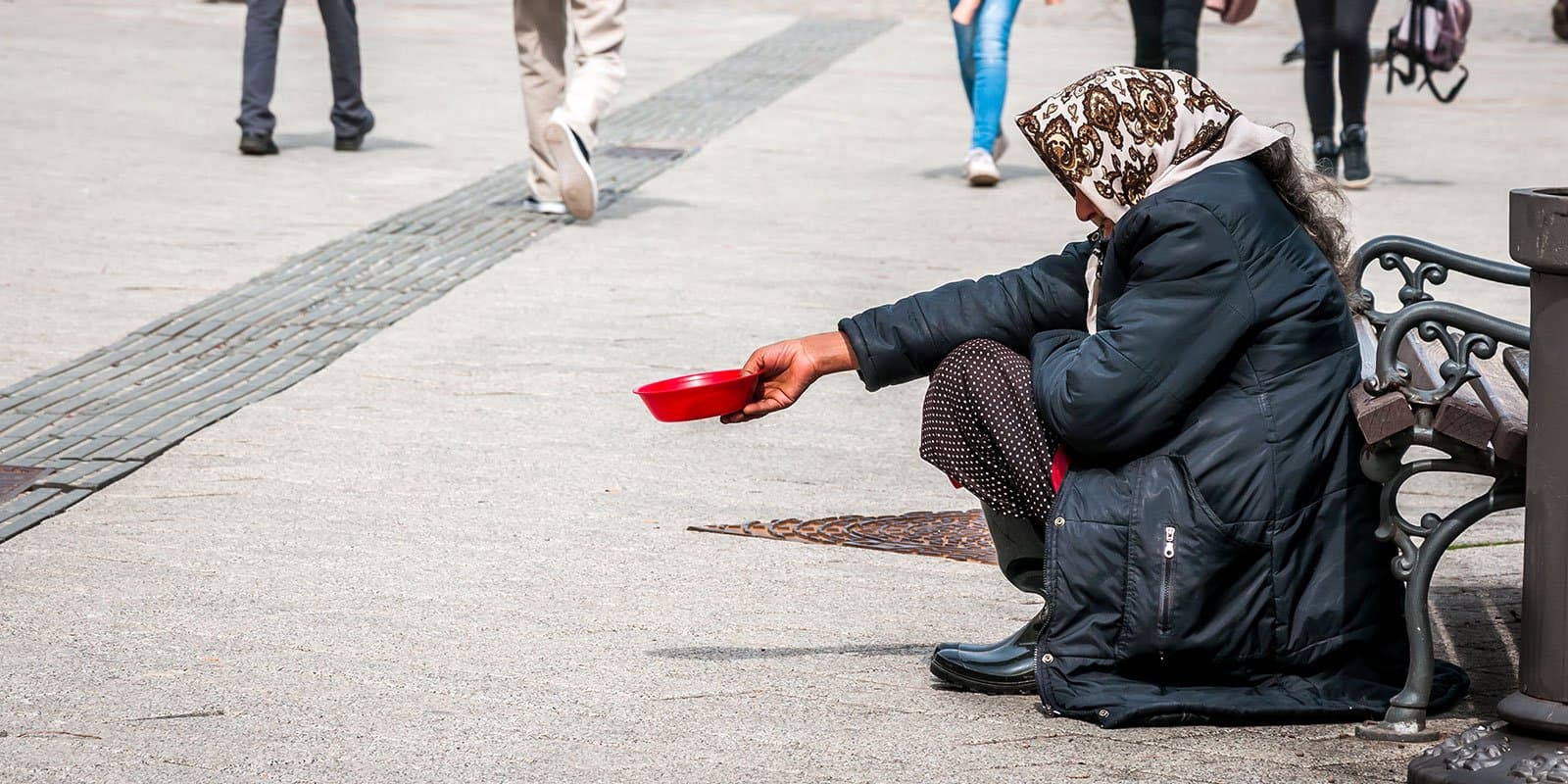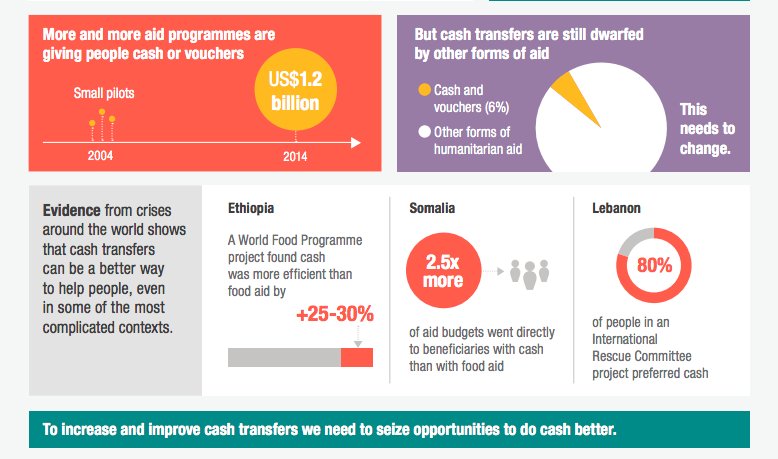
Cash is better for humanitarian aid
The words 'emergency' and 'cash' are often thrown together for a reason. Whether it is a humanitarian crisis due to war, terror, environmental disaster or a power outage, having access to cash can save lives.
Cash helps individuals, markets and countries dig themselves out of economic turmoil, boosting commere in local markets and empowering recipients. According to a study from global think ODI tank 2015, approximately 80% of people in crises prefer cash to in-kind aid. Cash is easy, fast and 25-30% more efficient.
Cash assistance can also link longer-term recovery and government-led efforts to support affected citizens.
"...all decision makers in the aid world should always be required to ask: ‘Why not cash? And if not now, when?’'
A recent article from The Economist, draws attention to the how 'cash is replacing other types of humanitarian aid, even in war zones'. Compared to 10 to 20 years ago, the percentage of global humanitarian aid forms has gone up from 'almost nothing' to 10% in 2016. But is that enough?
In 2011, war and drought plunged Somalia into famine Aid was held at the border, for fear of it being stolen. A few NGOS decided to try something different: giving people cash isntead of bringing in sacks of food. They used hawala networks a traditional Muslim form of money transfer- to get cash to aid worers, who handed it out. But most charities hung back, afraid of accidentally running aoul of Amreican anti-terrorism laws.
"We know that cash works."
...Giving cash to poor people is not a new idea. The UN sends moeny direct to bank accounts it sets up for Syrian refugees in Jordan; many countries use cash tranfers as part of theri social safety nets. What is new is donors' willingness to give out cash in warzones. Where possible, they use mobile money tranfers. But in other places, including Syria, they increasingly regard the risks that come with using hawala systems as justified by the benefits of cash.
Related content
CaLP State of the World's Cash Report It’s November and humanitarian planning season is in full swing. To its advocates, the Humanitarian Needs Overview (HNO) and Humanitarian Response Plan (HRP) process is a critical opportunity to collectively allocate resources and capacities to meet the most urgent humanitarian needs in a given context. To its detractors, the process is a time-consuming distraction which has little impact on the ultimate shape of the response.
Center for Global Development Doing cash differently In recent years, the use of cash transfer programming (CTP)1 in humanitarian assistance has grown significantly. In 2016, we estimate that $2.8bn2 in humanitarian assistance was disbursed through cash and vouchers, up 40% from 2015 and approximately 100% from 20143 . As this report describes, the move to CTP has strong roots and is set to continue. CTP is widely recognised as one of the most significant areas of innovation in humanitarian assistance, with huge potential to meet more needs, more efficiently and more effectively.
Cash matters to charities, finds UK Giving Report
In recognition of #InternationalDayofCharity, we'd like to draw your attention to the special relationship between cash and charitable giving. Did you know that in the UK, people donate more than £300 million to charities each year in the form of loose change?

